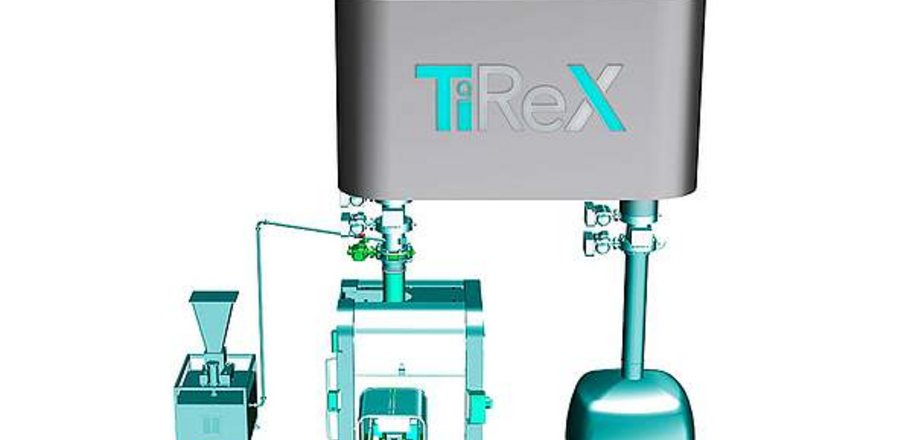
In October 2019, the European Commission classified titanium dioxide (TiO2) as a substance suspected of being carcinogenic by inhalation: TiO2 is now a class 2 carcinogen. As of October 1, 2021, it thus became legally binding to label powdered mixtures containing at least 1 % TiO2 particles with a particle size ≤ 10 µm („TiO2 fine dust”) with a warning notice informing users of the possible formation of respirable dusts or droplets (EUH211 / EUH212). Hence, the powder coatings industry fears that it will lose its green label for TiO2. NEUMAN & ESSER has developed a solution that makes it possible to use powder coatings containing TiO2 without a warning label.
Today, the largest area of application for TiO2 is as a white pigment in the paint industry. There is no technical alternative for TiO2 for the production of white and light-coloured powder coatings. Only 119 of the 2.328 colours of the RAL system are produced without TiO2. Consequently, there are fears that many powder coatings will thus lose their environmental label. This label stems from the numerous advantages of powder coatings: They are solvent-free, ecologically efficient, and their fire and explosion hazard is significantly lower than with solvent-based liquid paints. In addition to the damage for this green image of powder coatings, the new legislation will lead to rising disposal costs, since it will require powder coatings to be treated as hazardous waste.
Therefore, NEUMAN & ESSER came up with a solution that allows powder coatings containing TiO2 to be used without the need of a warning label. The company has developed a process that reduces the content of titanium dioxide particles with a particle size ≤ 10 µm in the powder coating to values below 1 %. This new titanium dioxide reduction system is called “NEATiReX”. The NEATiReX can be installed both inline in the powder coating grinding system as well as offline as a separate process step.

The system works as follows. The ground powder coating is added to the NEATiReX via a rotary valve and transported pneumatically within the system. The temperature of the intake air can be reduced down to 2°C by an air cooler as a means to control the effectiveness of the reduction process. In the NEATiReX, a specially developed process reduces the content of TiO2 fine dust in the powder coating. TiO2-dust and the finished powder coating are then discharged separately. The air required for the transport leaves the system via a filter to ensure environmental-friendly operation. It is also possible to return the discharged air back into the system to increase efficiency. The post-blend-additives required in the final powder are added after the TiO2-reduction has been completed. To feed these additives, the NEUMAN & ESSER Additive Dosing and Dispersing System NEAddiX is used. Finally, the TiO2 fine dust is compacted with the NEACompaX. The dimensions of the entire NEATiReX-system are 3m x 3m x 5m.
The design process was conducted using Computational Fluid Dynamics (CFD). A first design concept was used as input geometry, which was then analyzed and improved with focus on flow guidance and energy efficiency. The final system was tested extensively using two different formulations (A & B) of ground white powder coatings with a TiO2-content of approx. 40 %.
In the tests, the influence of both dust load and process temperature on the reduction process was investigated. The dust load was varied between 155 g/m³ and 1009 g/m³, and two process temperatures 5°C and 35°C have been selected for the tests. The target of the tests was to reach a TiO2-fine dust content of less than 1 % in the final product. The results are depicted in the following figure: The higher the dust load of the product stream, the lower the TiO2 fine dust content in the final powder coating product. At a process temperature of 35°C, the TiO2-fine dust content cannot be kept below 1 %. At a process temperature of 5°C, the TiO2 fine dust content of both products at dust loads between 329 g/m³ and 1009 g/m³ is below the desired value of 1 %.

The most efficient operating range lies at a process temperature of 5°C with dust loads between 840 g/m³ and 1050 g/m³. In this dust load range, the specific energy consumption is between 2 and 9 kWh/t. The specific energy consumption of product B is twice as big as the coarse product A. This indicates the higher efficiency of the reduction process for coarser products.